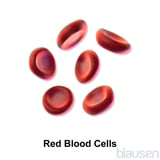Swollen Lump After Blood Draw
Lymph nodes are tiny, bean-shaped organs that filter lymph fluid Overview of the Lymphatic System The lymphatic system is a vital part of the immune system. It includes organs such as the thymus, bone marrow, spleen, tonsils, appendix, and Peyer patches in the small intestine that produce... read more  . They are located throughout the body, but particular collections are found just under the skin in the neck, under the arms, and in the groin area. Lymph nodes are part of the lymphatic system Overview of the Lymphatic System The lymphatic system is a vital part of the immune system. It includes organs such as the thymus, bone marrow, spleen, tonsils, appendix, and Peyer patches in the small intestine that produce... read more
. They are located throughout the body, but particular collections are found just under the skin in the neck, under the arms, and in the groin area. Lymph nodes are part of the lymphatic system Overview of the Lymphatic System The lymphatic system is a vital part of the immune system. It includes organs such as the thymus, bone marrow, spleen, tonsils, appendix, and Peyer patches in the small intestine that produce... read more  , which is one of the body's defense mechanisms against the spread of infection and cancer. (See also Overview of the Lymphatic System Overview of the Lymphatic System The lymphatic system is a vital part of the immune system. It includes organs such as the thymus, bone marrow, spleen, tonsils, appendix, and Peyer patches in the small intestine that produce... read more
, which is one of the body's defense mechanisms against the spread of infection and cancer. (See also Overview of the Lymphatic System Overview of the Lymphatic System The lymphatic system is a vital part of the immune system. It includes organs such as the thymus, bone marrow, spleen, tonsils, appendix, and Peyer patches in the small intestine that produce... read more  .)
.)
Lymph is clear fluid that is made up of water, white blood cells White Blood Cells The main components of blood include Plasma Red blood cells White blood cells Platelets read more  , proteins, and fats that have filtered out of blood vessels into the spaces between cells. Some of the fluid is reabsorbed by the blood vessels, but the rest enters the lymphatic vessels. Lymph then passes through the lymph nodes, which are specific collection points where damaged cells, infectious organisms, and cancer cells are filtered from the fluid and destroyed. If many infectious organisms or cancer cells are present, the lymph nodes swell. Sometimes, organisms cause infection within a lymph node.
, proteins, and fats that have filtered out of blood vessels into the spaces between cells. Some of the fluid is reabsorbed by the blood vessels, but the rest enters the lymphatic vessels. Lymph then passes through the lymph nodes, which are specific collection points where damaged cells, infectious organisms, and cancer cells are filtered from the fluid and destroyed. If many infectious organisms or cancer cells are present, the lymph nodes swell. Sometimes, organisms cause infection within a lymph node.
Lymphadenopathy is the term doctors use to refer to swollen lymph nodes.
Lymph nodes in only one body area may be swollen, or nodes in two or more body areas can be swollen. Other symptoms, such as sore throat, runny nose, or fever, may be present depending on the cause. Sometimes swollen lymph nodes are discovered when the person is being examined because of another symptom.
The most common causes of swollen lymph nodes are
-
Upper respiratory infections (URI)
-
Infections in tissues near the swollen lymph node
Sometimes doctors cannot determine the cause of the swelling (called idiopathic lymphadenopathy), but the swelling goes away on its own without causing the person any harm.
The most dangerous causes of swollen lymph nodes are
-
Cancer
However, probably less than 1% of people with swollen lymph nodes have cancer.
Not every person with swollen lymph nodes requires immediate evaluation by a doctor. The following information can help people decide when a doctor's evaluation is needed and help them know what to expect during the evaluation.
In people with swollen lymph nodes, certain symptoms and characteristics are cause for concern. They include
-
A node that is an inch or more (about 2.5 cm) in diameter
-
A node that is draining pus
-
A node that feels hard
-
Risk factors for HIV infection (such as having been stuck with a needle used by another person or having engaged in high-risk sexual activities) or tuberculosis (such as living or working with a person who has tuberculosis or having recently moved from an area where tuberculosis is prevalent)
-
Fever or unexplained weight loss
If a lymph node is very painful or draining pus or other material, people should see a doctor right away. Other people should call their doctor. The doctor will decide how quickly they need to be seen based on the presence of warning signs and other symptoms. For people who have no warning signs and otherwise feel well, a delay of a week or so is not harmful.
Doctors ask
-
Where the swollen nodes are located
-
How long nodes have been swollen
-
Whether the person has pain
-
Whether the person has recently had an injury (particularly cat scratches and rat bites)
-
Whether the person has an infection or symptoms of an infection (for example, a runny nose, cough, fever, sore throat, unexplained weight loss, or tooth or gum pain)
Doctors then do a physical examination. Doctors check for fever and examine areas where lymph nodes are found. Doctors check the person for any signs of infection or lumps elsewhere in the body. People who have swollen lymph nodes throughout the body usually have a disorder that affects the entire body. However, people who have swollen lymph nodes in only one area may have a disorder that affects only that area (for example, an infection) or more widespread disease.
Sometimes, the history and physical examination findings suggest the cause, as for example when the person has an upper respiratory infection or a dental infection. In other cases, findings do not point to a single cause. People with warning signs are more likely to have a serious disorder, but people with lymph node swelling and no other symptoms may also have a serious disorder.
Nodes that are hard, very enlarged, and do not move when pushed may indicate cancer. Tenderness, redness, and warmth in a single enlarged lymph node may indicate an infection of the node.
![]()
If history and physical examination do not show a likely cause, further testing depends on the nodes involved and the other findings present.
People with warning signs and those with widespread lymph node swelling should have a complete blood count and chest x-ray. Doctors may also test for tuberculosis, HIV infection, and mononucleosis. Sometimes blood tests are needed to detect toxoplasmosis and syphilis. In people with joint pain or stiffness or a rash, blood tests are done for systemic lupus erythematosus (lupus).
If doctors suspect cancer or lymphoma, the person has a lymph node biopsy. Biopsy may also be needed when widespread lymph node swelling does not resolve within 3 to 4 weeks.
Treatment is directed at the cause. For example, if a bacterial infection of the lymph node is suspected, a trial of antibiotics is given to see if the swelling resolves.
-
In most cases, the cause is an obvious nearby skin or tissue infection or a harmless viral infection that goes away on its own.
-
Testing is usually needed when there are warning signs, when other symptoms or risk factors suggest a specific disorder, or when widespread lymph node swelling has no apparent cause.
-
When lymph node swelling does not resolve within 3 or 4 weeks, a biopsy may be needed.
| Generic Name | Select Brand Names |
|---|---|
| pyrimethamine | DARAPRIM |
| carbamazepine | TEGRETOL |
| allopurinol | ZYLOPRIM |
| quinidine | No US brand name |
| phenytoin | DILANTIN |
| captopril | CAPOTEN |
| atenolol | TENORMIN |
Source: https://www.merckmanuals.com/home/heart-and-blood-vessel-disorders/lymphatic-disorders/swollen-lymph-nodes
0 Response to "Swollen Lump After Blood Draw"
Post a Comment